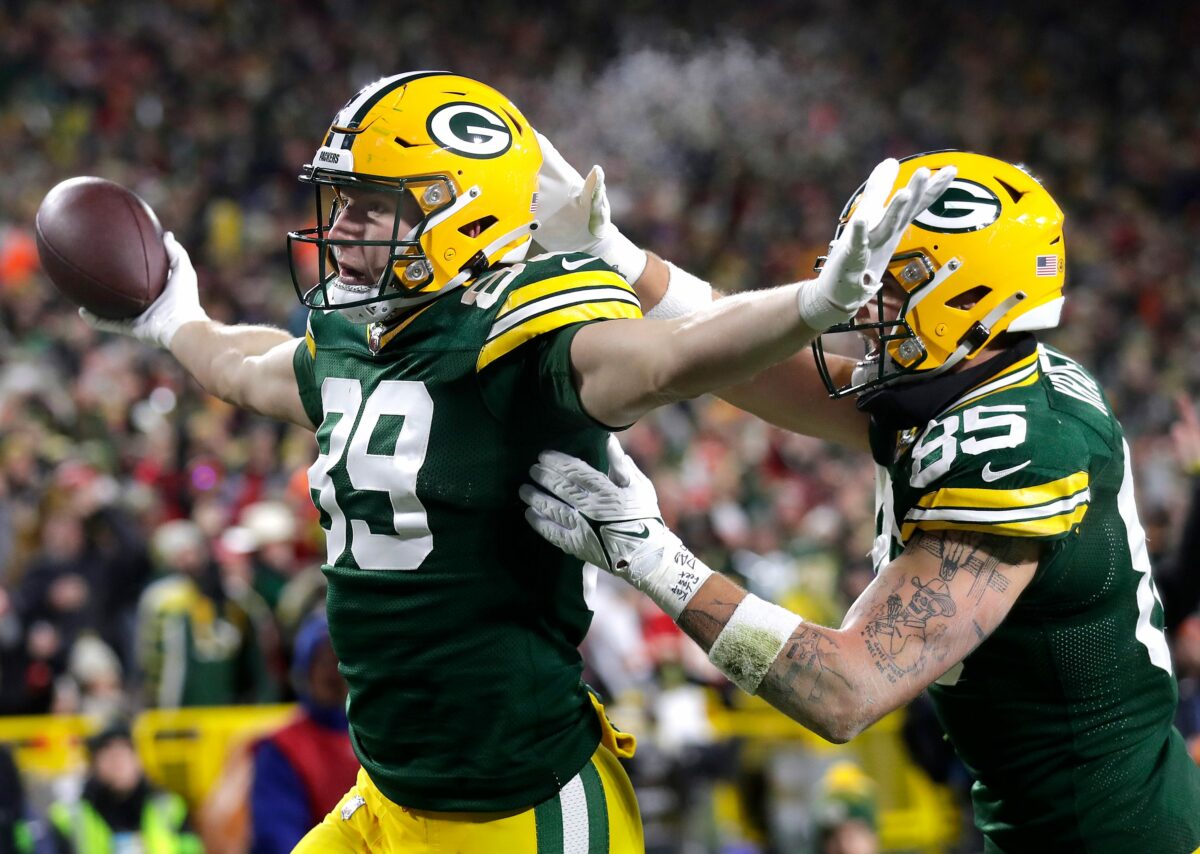A difficult red zone matchup for the Green Bay Packers against the Tampa Bay Buccaneers defense could be a determining factor in Sunday’s game at Lambeau Field.
Opponents have found success moving the ball on the Bucs, particularly through the air. Tampa will enter Sunday’s game allowing 7.2 yards per pass attempt, the fourth-most in football. As a result, opposing offenses are making their way to the red zone against Tampa 3.3 times per contest, the ninth-highest average in football.
However, once there, this Bucs’ defense has been one of the best at keeping teams out of the end zone. Led by a stout run defense and two rangy linebackers, Tampa Bay is allowing a touchdown on only 41.8 percent of their opponents’ red zone visits, good for fourth-best this season.
“They’re a physical defense,” said offensive coordinator Adam Stenavich on Thursday, “and their linebackers have really good range. (Lavonte) David and (Devin) White are excellent players. So their front, they set the edge, they are big and physical inside, and their DBs are really physical on the edge. It kind of just caps everything in there, and those linebackers can really cover ground and make plays.
“They have some really talented players, and their scheme is tough. They do a lot of double coverage and things like that when they are playing coverage. So it’s going to be a challenge for us.”
Compared to the rest of the NFL, the Packers have been a below-average offense in the red zone. The good news is that they give themselves opportunities with 3.6 red zone attempts per game, but they convert those scoring chances into touchdowns just over 51 percent of the time and rank in the bottom third of the NFL.
At the end of the day, red zone efficiency was the difference in what ended up being a loss to the Giants, with Green Bay going just 2-for-5 in the red area and New York 3-for-4.
“Ultimately, we’ve got to do a better job,” said Matt LaFleur on Thursday. “Everybody, making sure especially when we get into the red area. Tampa is one of the best in this league at it and we’re going to have to execute and have a better plan for Tampa.”
As LaFleur has discussed previously, a key component to red zone success begins with the run game. In part, this is due to being in an already condensed part of the field, which makes moving the ball through the air more difficult with there being less space.
Green Bay’s run game has been improved over the last month-plus compared to where it was through the first half of the season, but it is still far from dominant. Not to mention that there is some uncertainty at running back currently as AJ Dillon deals with a broken thumb and Aaron Jones works his way back from an MCL sprain. Even if both were to play, neither may be on a full workload.
The Tampa defense has been one of the better units against the run this season, allowing only 3.9 yards per attempt. Not only in the red zone, but in general in this game, the burden may have to fall on the Green Bay passing game to move the ball, and as Stenavich mentioned, the Bucs do a great job, specifically in the red zone, of funneling everything to the middle, where their dynamic linebacker duo of Lavonte David and Devin White can make plays.
“It’s hard to run the ball on them down there,” added Stenavich. “So again, it’s another challenge that’s something we have to overcome to make sure we can score some touchdowns, for sure.”
